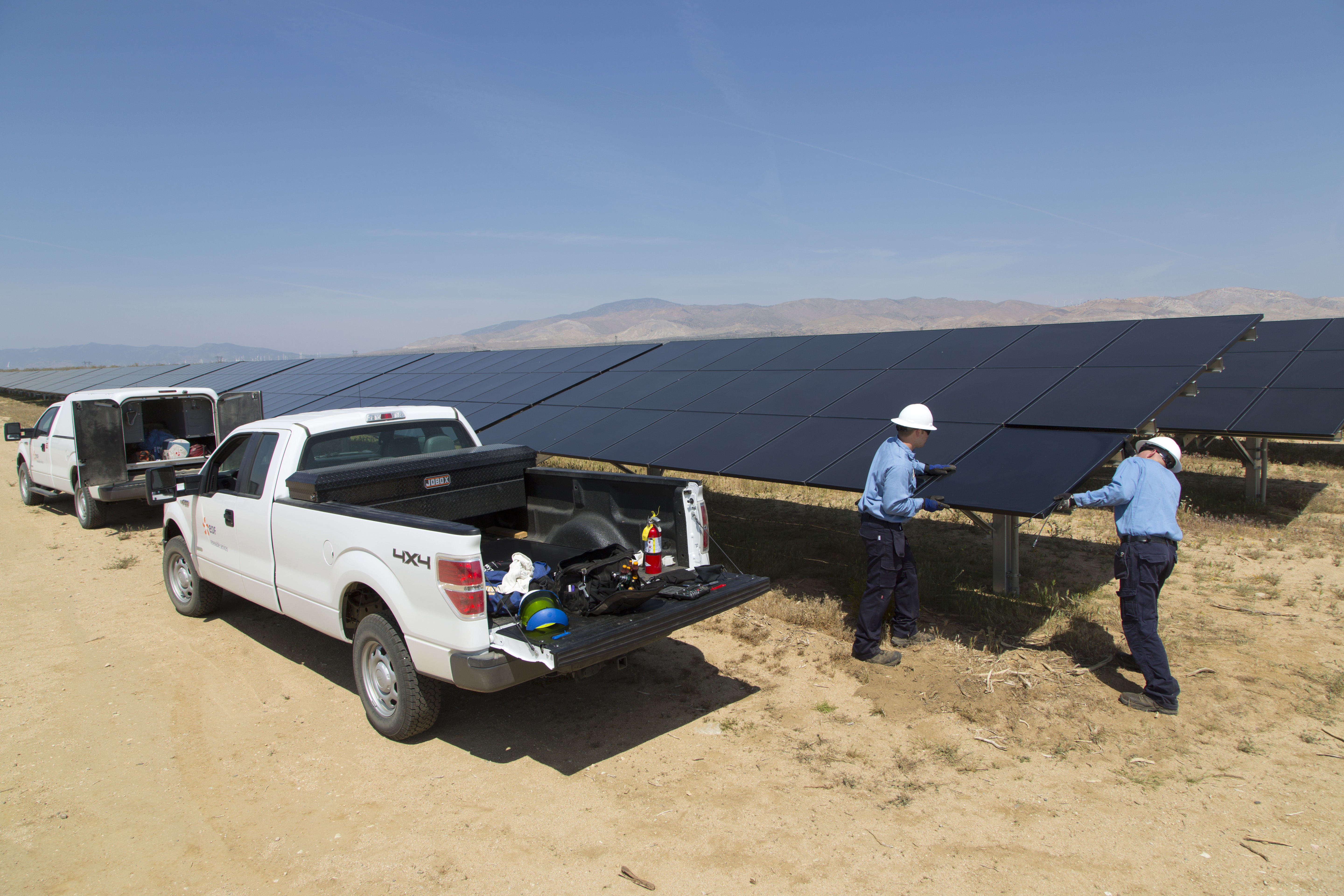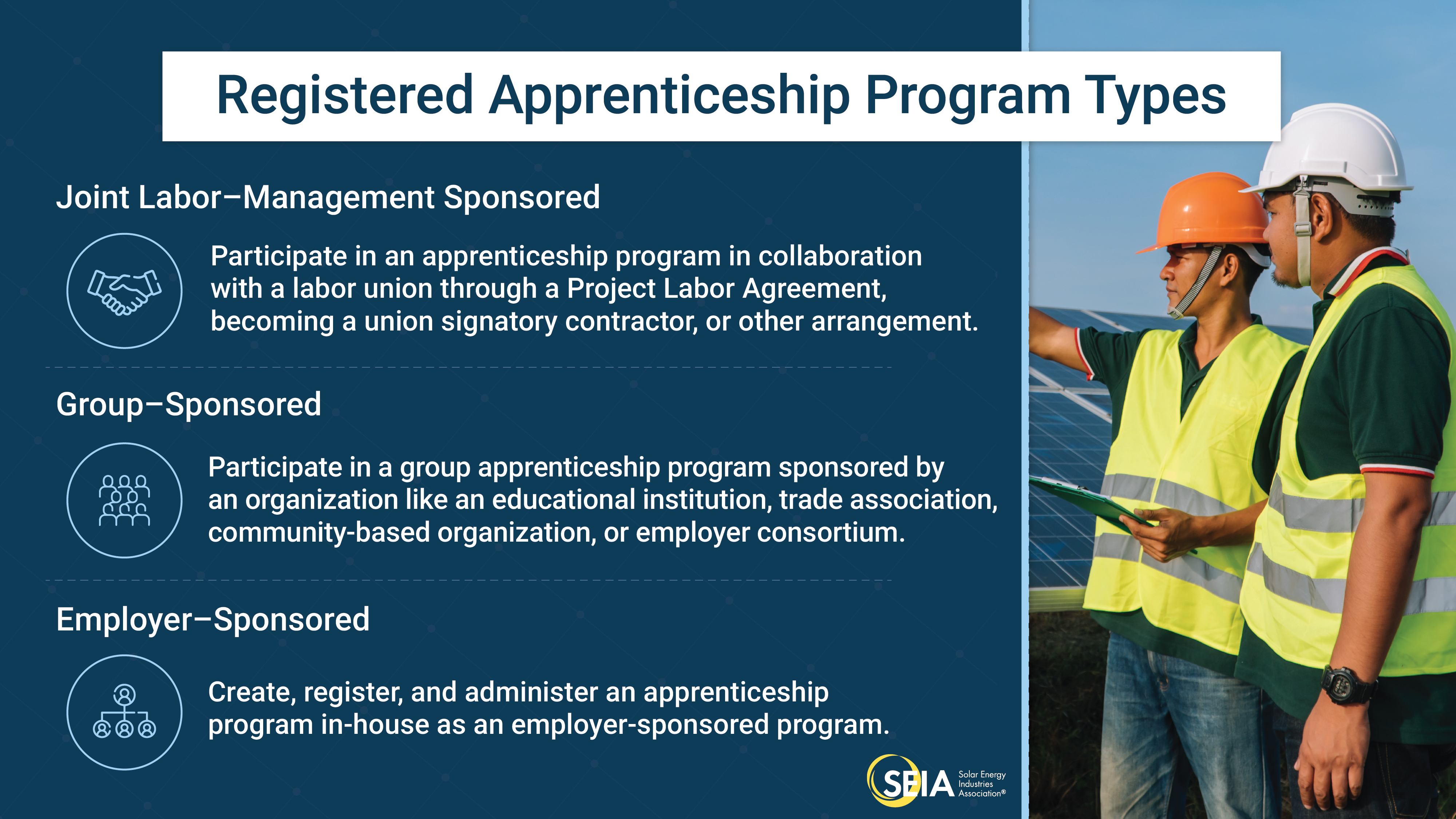Four Ways to Prepare for the IRA’s Upcoming Apprenticeship Requirements
Wednesday, Nov 16 2022

It’s no secret that the solar industry is a proven job creator. The Inflation Reduction Act (IRA) set the stage for the solar industry to create even more jobs and empower workers to earn money while they learn through apprenticeship programs. These opportunities will only become more important as the industry prepares to welcome new workers from all walks of life and help them succeed in the solar workforce.
This National Apprenticeship Week, the solar and storage industry is highlighting how apprenticeships are one part of a workforce strategy that can help workers develop the skills they need to thrive and benefit from the industry’s growth. These programs can open the door to immersive opportunities that help workers learn on the job and in the classroom and ultimately earn a certification for their completion.
Employers can also obtain financial incentives and technical support resources for using these programs.
New changes to the solar investment tax credit (ITC) and production tax credit (PTC) will require employers to hire qualified apprentices to unlock the full value of the tax credits. These apprentices must participate in a Registered Apprenticeship Program (RAP), which are official U.S. Department of Labor (DOL) or State Apprenticeship Agency-approved workforce development programs.
As the industry waits on the U.S. Department of the Treasury to provide more guidance on these requirements, solar and storage companies can start preparing now to assess staffing needs, learn about the different types of RAPs, make connections and build meaningful relationships.
Here are the top four actions companies can take today to start preparing for the new requirements.
Assess Staffing Needs and Project Locations
Companies must first take a hard look at their staffing needs and project sites before they can take advantage of apprenticeships. Whether companies are seeking construction craft laborers, electricians, or other currently approved apprenticeship occupations, it is important to identify the skillsets needed to complete their projects at the outset. Location is also critical to consider since the workforce landscape varies from state to state. There may be organized labor unions, trade associations, and community colleges that run local registered programs that they can work with to find the apprentices they need.
Learn About the Types of RAPs
To have apprentices’ hours count towards the IRA’s clean energy tax credits, apprentices must be enrolled and working in programs that have been officially registered with the U.S. DOL Office of Apprenticeship or a State Apprenticeship Agency. RAPs use an “earn while you learn” model that combines on-the-job learning and experience under the supervision of a credentialed mentor along with a minimum of 144 hours per year of technical instruction.
There are three main types of registered programs available.
Companies can create their own employer-sponsored programs in-house to support their workforce. Employers can also partner with organized labor unions to run joint labor-management sponsored programs. And there are third-party organizations, like trade associations and community colleges, that administer group-sponsored programs. It is possible for companies to use more than one apprenticeship type in different parts of the country, providing flexibility depending on what is available in their project area.

Build Relationships with State Apprenticeship Contacts
Companies should also start building relationships with the U.S. DOL’s State Apprenticeship Offices and Agencies where they anticipate deploying projects. These state government partners can help companies launch and register their employer-sponsored programs. Even if a company is not planning to launch an in-house employer-sponsored program, state apprenticeship offices are important local connectors that can point businesses toward other RAP sponsors that they can work with to ensure they get the full benefit of the tax credits.
Start Connecting with Partners Today
Regardless of which type of program companies choose to participate in, strong partnerships across the board are essential for success. Companies should start reaching out to potential partners sooner rather than later so they can hit the ground running once the IRA provisions go into effect. In addition, companies may want to consider their recruitment plans and build partnerships with local pre-apprenticeship programs, schools, and community-based organizations that can help them find and train the next generation of solar and storage workers.
To learn more about the IRA’s apprenticeship requirements and begin connecting with partners, SEIA is hosting a virtual meet and greet on Dec. 8 at 2:00PM ET. The interactive event, Preparing for Upcoming IRA Apprenticeship Requirements, will give attendees the opportunity for in-depth conversations with various key RAP sponsors and workforce organizations including labor unions, trade associations and a U.S. Department of Labor grant-funded apprenticeship intermediary.
Learn more about apprenticeships in the solar industry.